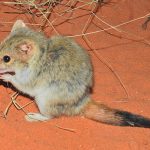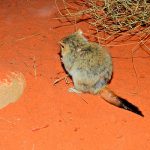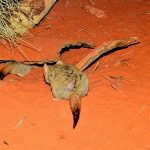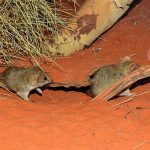CREST-TAILED MULGARA
Desert Survivor
The Crest-tailed mulgara is a fascinating example of adaptation in the harsh Australian outback. With its compact body measuring 12 to 22 centimetres and a distinctive bushy tail of 8 to 13 centimetres topped by a black crest, this small marsupial blends seamlessly into its sandy surrounds. The mulgara’s soft, sandy-coloured fur offers superb camouflage against the desert landscapes of the Northern Territory, South Australia, and Western Australia.
Its preferred habitats include:
- Sandy deserts
- Spinifex grasslands
- Loose, easily-dug soils for burrowing
Behaviour and Diet
Active mainly at night, the mulgara is a nocturnal hunter that preys on insects, spiders, beetles, and small reptiles, occasionally consuming plant material. Interestingly, it rarely drinks free-standing water. Instead, it absorbs nearly all its moisture from prey, an invaluable adaptation for desert survival.
A particularly striking feature of the Crest-tailed mulgara is its fat-storing tail. Much like a living energy bank, this tail thickens as reserves build up, helping the animal survive lean periods when food is scarce.
Breeding and Life Cycle
Crest-tailed mulgaras are largely solitary creatures, only coming together to breed during the cooler months (May to September). Remarkable reproductive features include:
- Short gestation (approx. 30 days)
- Litters of up to six young
- Joeys start their journey in the safety of the mother’s pouch before moving to a secure nest
Life in the wild can be perilous, with natural predators and environmental challenges often keeping life expectancy below their maximum five years.
Conservation Status
| Status | Threats | Conservation Actions |
|---|---|---|
| Near Threatened (IUCN) | Habitat degradation Invasive predators (cats, foxes) Changes in fire regimes | Habitat protection Control of invasive species |
Conservation efforts are critical to ensure this unique marsupial thrives, focusing on habitat preservation and managing predators.
Sensory Experience
Imagine a moonlit desert: the cool air carries the scent of dry earth and spinifex grass. Underfoot, the sand shifts softly as a mulgara darts between tufts, pausing in silence before emitting a series of quiet, high-pitched squeaks—a rare sound in the vast stillness except when danger is sensed or during encounters with its own kind.
Interesting Facts
- Survival without water: Crest-tailed mulgaras almost never drink, relying on their prey for hydration.
- Impressive fat storage: Their bushy, crested tails swell with fat, much like a natural canteen, an adaptation also seen in some lizards and desert mammals.
- Keystone role: As mid-level predators, they play an essential part in controlling insect and small reptile populations within Australian desert ecosystems.
- Burrow engineers: Their burrows provide shelter not only for themselves but occasionally for other desert-dwelling species seeking protection from extreme temperatures.
- Rediscovery: This species was once thought to be extinct in some areas until rediscoveries in the late 20th century highlighted its resilience.
The Bigger Picture
The story of the Crest-tailed mulgara is a powerful reminder of Australia’s remarkable wildlife and the delicate balance of arid-land ecosystems. Conservation efforts aimed at protecting such resilient creatures ensure the desert remains alive with the quiet, remarkable drama of survival.
By preserving their habitats and managing threats, we can ensure that future generations will continue to witness the enduring spirit and unique adaptations of the Crest-tailed mulgara—one of the desert’s most intriguing small predators.




